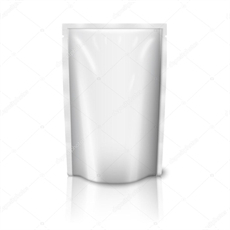Biodegradable plastic bags are designed to break down more easily than traditional plastic bags, but the process can vary depending on the specific material used and the environmental conditions. Here’s a general overview of how biodegradable plastic bags break down:
- Environmental Factors: Biodegradable plastic bags break down when exposed to environmental factors such as heat, moisture, oxygen, and microbial activity. These factors initiate and facilitate the decomposition process.
- Microbial Activity: In natural environments, microbial organisms play a crucial role in breaking down biodegradable materials. These microorganisms, including bacteria and fungi, secrete enzymes that break down the biodegradable polymer chains into simpler compounds.
- Hydrolysis: Biodegradable plastics are susceptible to hydrolysis, a chemical process where water molecules break the polymer bonds, causing the plastic to fragment into smaller pieces.
- Photodegradation: Some biodegradable plastics can also be broken down by exposure to sunlight (UV radiation), a process known as photodegradation. UV light causes the polymer chains to break down into smaller molecules.
- Composting: Biodegradable bags made from compostable materials like PLA (polylactic acid) are designed to break down more efficiently in industrial composting facilities. These facilities provide controlled conditions of heat, moisture, and microbial activity, which accelerate the decomposition process. Composting can turn biodegradable bags into compost, which can be used as a nutrient-rich soil amendment.
- Time Frame: The time it takes for biodegradable plastic bags to break down can vary widely depending on the specific material and environmental conditions. Some biodegradable plastics may break down within a few months to a few years, while others may take longer. The rate of decomposition can be influenced by factors such as temperature, humidity, and the presence of microorganisms.
- Residue: In ideal conditions, biodegradable plastics should break down into natural substances like water, carbon dioxide, and biomass, leaving behind minimal or no harmful residues. However, the extent of complete biodegradation can vary depending on the material and environmental conditions.
It’s important to note that the biodegradability of these bags can vary depending on the material and manufacturer, so it’s essential to choose products that meet recognized biodegradability standards and guidelines. Additionally, proper disposal is crucial to ensure that biodegradable bags break down as intended. This may involve disposing of them in designated composting facilities or following specific disposal guidelines provided by local authorities.
Overall, while biodegradable plastic bags offer environmental benefits compared to traditional plastic bags, it’s important to use and dispose of them in an environmentally responsible manner to maximize their positive impact on reducing plastic waste.














